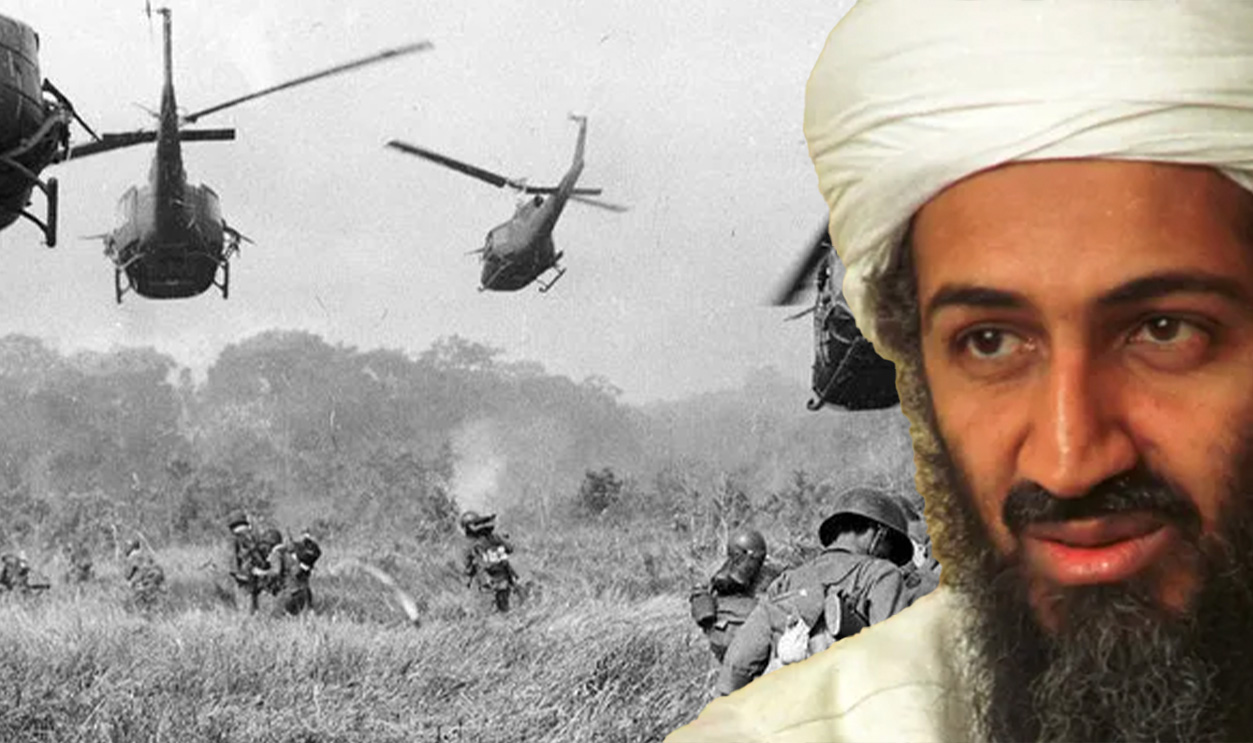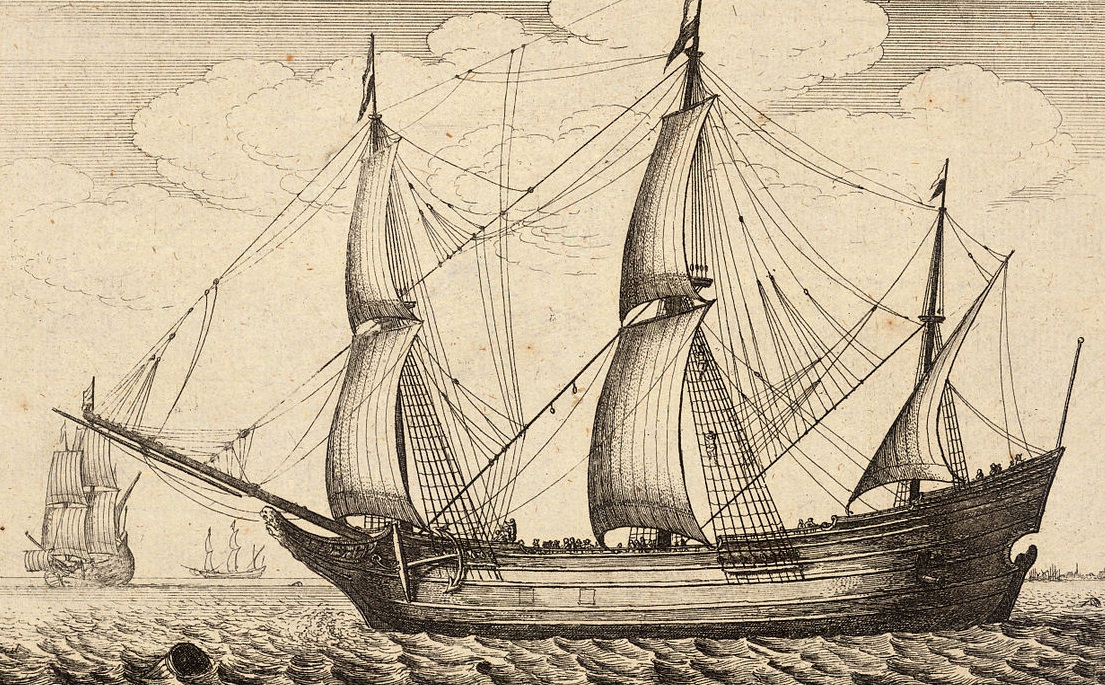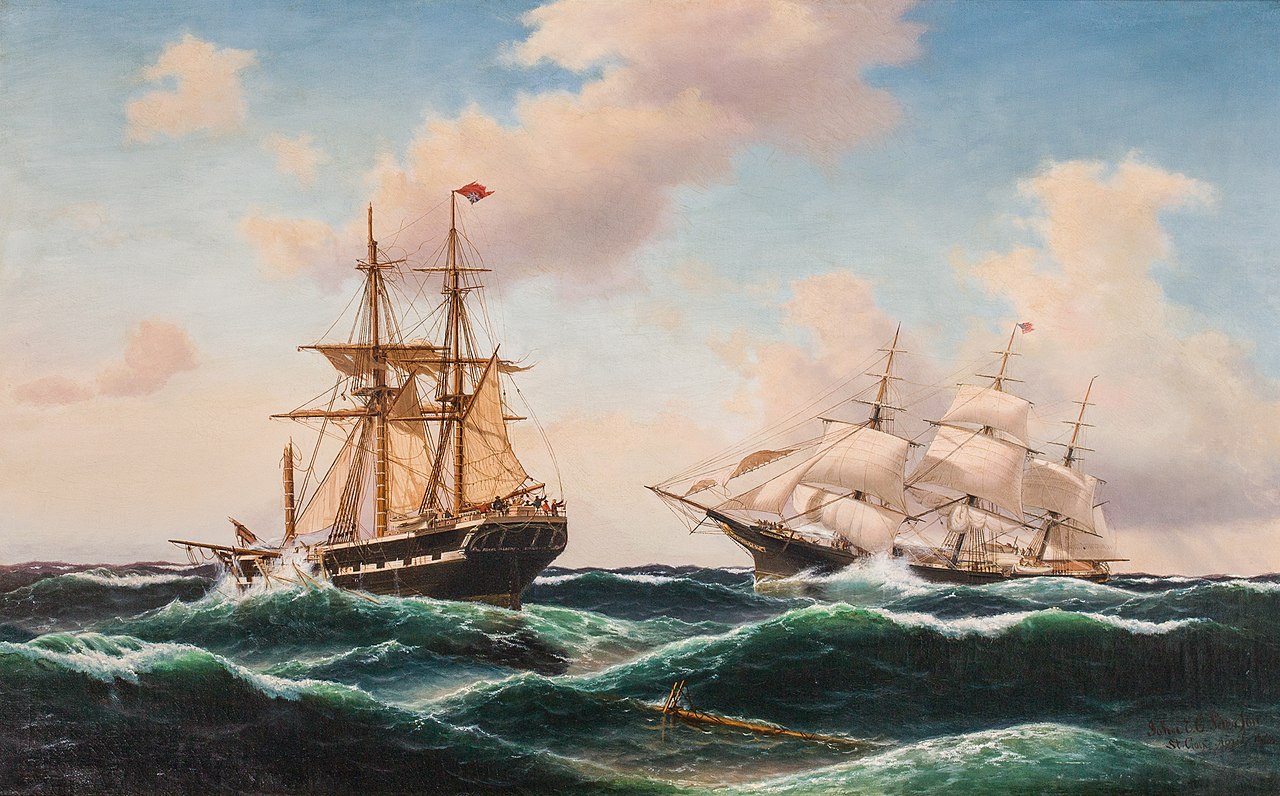Wars The United States Didn't Win
Since independence in 1776, the United States has built one of the world's most powerful militaries. It has about 2 million active-duty military personnel across all branches and has engaged in over 100 military conflicts in the last 249 years, usually with success. But let's look at some wars that America didn't win.

The American-Algerian War
The American-Algerian War lasted between 1785 and 1795. It was the first military conflict the United States engaged in after obtaining independence from Great Britain. Because the Royal Navy was no longer patrolling the High Seas, Algerian Barbary pirates captured 53 American merchant vessels and one prison ship.

The Back Story
Led by Dey Muhammad, the Regency of Algiers declared war on the United States in 1785 and began capturing American ships along the Barbary Coast (a region now comprising the coasts of Turkey and Morocco) after the Royal Navy informed Barbary states like Algeria that US ships were no longer under their protection. The American ships were defenseless, as the flat-broke United States didn't have enough money for a navy.

The War
America's first military conflict was solved rather diplomatically, without any losses on either side, minus the captured ships and crewmembers. The United States began negotiations with Morocco, but Thomas Jefferson (then Minister to France) failed to gather a coalition of states to act militarily against Algiers. This left negotiation and payment for the release of their sailors and ships as America's only option.
The Aftermath
In total, the Americans paid $21,600 in tributes to the Algerians for the release of their men and ships, as part of a peace treaty they negotiated in 1795. In 1794, the US Congress passed the Naval Act, creating the United States Navy to help prevent this from happening again. The initial US Navy comprised only six frigates.
The War Of 1812
The War of 1812 was another "L" in the American military column. It began on June 18, 1812, after the United States declared war on Great Britain, following what it viewed as British aggression. Lasting two years, the war resulted in many casualties and the losses of iconic buildings in both the United States and Upper Canada.
The Back Story
Likely a little sore from the loss of America to independence, Great Britain controlled the high seas and used this control over the Atlantic Ocean to sign the Navigation Acts, which prohibited America from trading with European nations, by imposing that the US could only export goods to England and that they be transported by English ships. Further to this trade imposition, the British Navy began recruiting American sailors, which was a big no-no, as far as the US was concerned.
The War
President James Madison signed a Declaration of War on June 18, 1812. On July 2, 1812, a French-Canadian officer of the Provincial Marine captured an American vessel on the Detroit River, marking the first capture during the war. 10 days later, the United States invaded Upper Canada at Windsor, burning homes to the ground and looting from everyday Canadians. During two years of war, the Americans would invade Upper Canada four times, while the British would burn down the White House.
The Aftermath
In the end, the War of 1812 drew to a stalemate between the British and Americans. The final battle was fought at New Orleans from January 3-8, 1815—with neither British nor American forces aware that the Treaty of Ghent had been signed two weeks earlier. This treaty was negotiated in Belgium and drew hard boundaries between the British-controlled Upper Canada and the United States. The war officially ended with Congress ratifying the treaty on February 16, 1815.
Red Cloud's War
Known as Red Cloud's War, this conflict took place between the Government of the United States and an alliance of the Cheyenne, Lakota, and Northern Arapaho peoples of central Wyoming and Montana.
The Background
As the immigrants of the United States expanded westward, they would create new roads, military forts, and other outposts, mostly to gain control over access to gold that had been found in Montana. This would put the settlers in direct conflict with the Indigenous peoples of the land. The civilian traveling caravans were attacked, which prompted the American government to deploy the US Army.
The War
The Powder River Expedition saw 2,675 soldiers move into the Cheyenne, Lakota, and Northern Arapaho territory in 1865, beginning Red Cloud's War. The expedition would fail to defeat the Indigenous peoples in any skirmishes. Other battles over the next two years would result in similarly humiliating defeats for American forces.
The Aftermath
In 1868, the US government negotiated the Treaty of Fort Laramie with Red Cloud and representatives from other Indigenous tribes of the Powder River. This led to the United States' withdrawal from their forts along the Powder River, declaring it "unceded Indian territory". This treaty lasted 10 years, until the Great Sioux War of 1876.
The Formosa Expedition
Otherwise known as the Taiwan Expedition, the Formosa expedition was an armed conflict that took place between the United States and the Paiwan people of Taiwan. The Paiwan people discovered an American merchant ship adrift in waters off the coast of Taiwan, killing their crew. A Royal Navy vessel sailing in the same area some weeks prior discovered the wrecked ship and dead crew and informed the American East India Station. The United States led the Formosa Expedition to the islands to avenge their dead crew.
The War
The conflict between the Paiwan and the United States gunboat Hartford lasted just one day. Upon arriving off the southeastern coast of Taiwan on June 13, 1867, 181 sailors, Marines, and officers landed and were tasked with killing the Paiwan and capturing their village. Unfortunately, the sailors were unprepared for the heat, humidity, and rough, mucky terrain of Taiwan in the summer. After an hour's march, the Paiwan attacked the American force with muskets and spears, from an elevated position.
The War (Cont'd)
After six hours of back and forth ambushes, the American forces had lost their Lieutenant, who'd been struck by a musket ball and mortally wounded, and many of the men had grown delirious from the heat or collapsed. This left the remaining force with little choice but to withdraw and return to the Chinese mainland.
The Aftermath
In September of 1867, following repeated attempts to re-take Paiwan—this time, with assistance from the Qing Dynasty of imperial China—Charles Le Gendre, American Foreign Minister to Japan marched to the Paiwan capital and crafted a Memorandum Of Understanding that specified that the United States and other merchant ships would be allowed to sail by the island without fear of attack, while also assuring that shipwrecked sailors would not be murdered if they came ashore.
The Korean War
The Korean War began on June 25, 1950, as troops from North Korea's Korean People's Army crossed the 38th parallel that had divided the country following the conclusion of World War II. This began a three-year conflict that saw over 8,500 American casualties and concluded with an armistice in 1953.
The Background
Following the conclusion of WWII, American and British forces had been unsure of what to do about Korea, as it had been lifted out of Japanese imperial rule by the Soviet Union, who had fought with Korean forces against the Japanese. On August 10, 1945, Korea was divided along the 38th parallel in US General Order 1, which went into effect after the surrender of Japan on August 15th. On September 7, 1945, General Douglas MacArthur declared to the Korean people that everything south of the 38th parallel was to be controlled by the US military, as the Japanese surrendered.
Elections, Riots, & The Creation Of A Republic
As Korea was administered by a joint US-Soviet commission in the early days following the declaration, its people were told that they'd have to wait five years for independence. Not being satisfied, the people began to riot and strike, which led to the implementation of martial law for almost three years. Following this, elections were held on July 20, 1948, and Syngman Rhee was elected and created the Republic of South Korea on August 15, 1948.
The War
After two years of tensions between South and North Korea, North Korea invaded the South. After a UN Security Council Resolution, the United Nations Command, led by the United States, committed air and ground forces to help the South Koreans. The United Nations Command and North Korea would exchange very little territory during the three years of war.
The Aftermath
After two years of stalemate, the United Nations Command and the Korea People's Army finally agreed upon an armistice, resolving points of dispute that included prisoner of war repatriations. India had tabled an armistice agreement that was accepted and signed by the North Koreans and the UNC. No formal treaty has ever been agreed between North Korea and South Korea.
The Vietnam War
The Vietnam War was another American proxy war against communism that lasted for 20 years, fought between the United States and the North Vietnamese Army. Although the United States had been tacitly supporting South Vietnam's emperor, Bao Dai and the Soviets had been throwing their weight behind Ho Chi Minh and the North Vietnamese. After six years of political and military posturing, President Kennedy was authorized to send troops to Vietnam in 1961, marking the proper beginning of the Vietnam War.
The Background
The Vietnam War would begin with a rout of Japanese and French imperialists by Vietnamese rebels who wanted a free, democratic Vietnam. Known as the August Revolution, beginning on August 16, 1945, it took charismatic leader Ho Chi Minh two weeks to seize power from the ruling Japanese puppet emperor.
Other communist states recognized Vietnam as an independent country, much to the chagrin of the United States. The US sent weapons to bolster their French allies in Vietnam who, by 1950, were engaged in an all-out war with the North Vietnamese Army commanded by Ho Chi Minh.
The War
American soldiers were stationed in Vietnam in the late 1950s to support South Vietnamese forces. After American troops were killed by North Vietnamese soldiers in 1959, two years later, a large number of American forces were sent to Vietnam, despite no official declaration of war. This would begin a see-saw style conflict that saw major troop losses on both sides, with the NVA often emerging victorious in small and large-scale battles throughout the conflict.
The War (Cont'd)
With the growing unpopularity of the Vietnam War at home, in 1968, newly-elected President Richard Nixon decided to craft a new policy: Vietnamization, a process of withdrawing US forces from the country. Henry Kissinger, the US Secretary of State, began secret negotiations in Paris with representatives from the North Vietnamese in 1970. A tipping point for American withdrawal was the Kent State Massacre on May 4, 1970, when a group of students were fired upon by the Ohio National Guard.
The Aftermath
After the signing of the Paris Peace Accords on January 27, 1973, the Vietnam War was effectively over. The American army casualties totaled 58,220 and the number of civilians lost was around 2 million. Two years after the last US forces left Vietnam, the South Vietnamese capital of Saigon fell to the North Vietnamese Army, unifying Vietnam under communism and ensuring a humiliating defeat for the United States.
A Humiliating Defeat In Just Three Days
On April 17, 1961, 1,400 paramilitary soldiers from the Democratic Revolutionary Front of Cuba, backed by United States air and naval assets, launched an amphibious assault from Guatemala and Nicaragua on mainland Cuba, attempting to topple the government of Fidel Castro. Known as the Bay of Pigs, the ensuing battle would last for just three days between the Cuban Armed Forces and the US-backed revolutionaries.
America Withdraws Air Support
The operation to take over Cuba and topple Castro was supposed to be a secret, but when the international community found out about it, President Kennedy was wary of the reaction and withdrew CIA air support authorization on April 19th, offering no more ammunition or support to the revolutionaries that the Americans had propped up. Two American destroyers brought in to evacuate the retreating DRF forces were also forced to withdraw.
The Bay of Pigs is widely considered to be one of America's greatest foreign policy blunders of the 20th century. It was a total disaster on all fronts—four American servicemen died, Fidel Castro was more popular than ever following the action, and the objectives of the American government failed miserably.